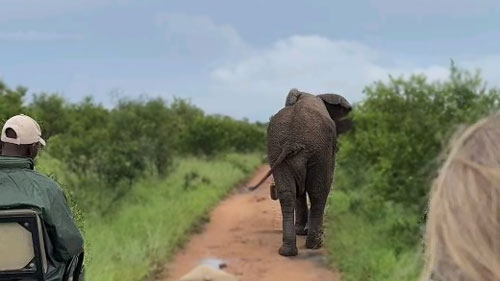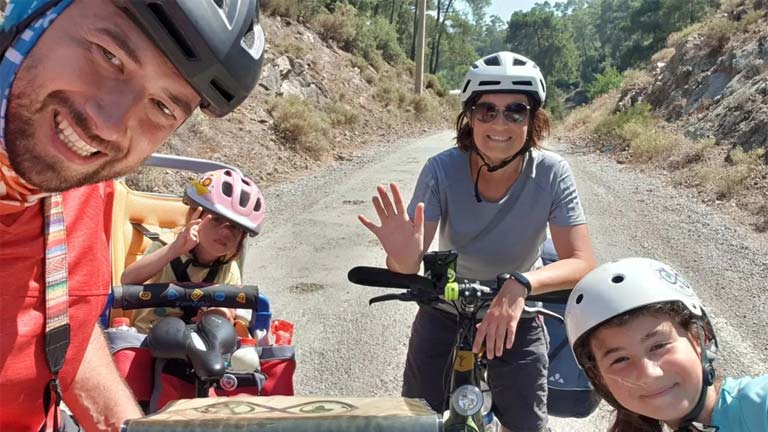
Wildlife watching is an enjoyable activity for many people, and it can be fascinating to see how animals behave in their natural habitat outside of urban areas and captivity.
Most people will not live too far away from a park or nature reserve of some kind, and you can even spot some animals when walking in the woods.
However, the presence of humans can cause changes in behaviour and potentially disturb animals, so it is important to always follow proper wildlife-watching etiquette and follow the rules of any wildlife reserve you visit.
Here are some top tips:
Keep your distance
It is important to keep your distance from animals to avoid disturbing them. They may also change their behaviour if humans are nearby, potentially becoming aggressive in some cases.
If you have your dog with you, it should be kept on a lead at all times, or better yet, do not bring them at all. Never let your dog chase wildlife, as the additional stress caused by this can be tough on animals.
Stay away from bird’s nests, as they are especially sensitive to disturbance. You should also try to avoid ‘saving’ wildlife such as baby birds or rabbits if you find them alone. It is likely that their mother is watching from a safe distance, and she is unlikely to return to them until you have left, which could put them in danger.
If you are concerned about the animal or think it is injured, contact a local wildlife rehabilitation centre or charity instead of taking matters into your own hands. Similarly, if you see a dead or dying animal that does not look like it was killed by a predator, be sure to report it to the relevant authority.
Never feed wild animals
Wild animals can sometimes become reliant on humans for food if they are fed too often. In some instances, the animal may begin to associate humans with food, and this may cause them to exhibit aggressive behaviour.
As well as this, humans should never feed them human-food. For example, ducks should never be fed with bread despite this being a common practice. It’s always best to just leave wild animals to find their own food and live naturally.
Do not interfere with their natural behaviour
Do not attempt to attract the attention of wild animals, or touch them. You should not impact their behaviour in any way, even if there’s a predator trying to catch its prey which could be upsetting to witness.
You should also be incredibly mindful of any baby animals that you see, as it can be dangerous to stand between a baby animal and its mother, who will attack humans to protect their child.
Leave no trace
When visiting parks, open spaces, or anywhere outside of your own home, always remember to take any rubbish with you so that you are not polluting the natural habitat of any animals.
Litter can also be a serious health hazard for animals, as they may try to eat it or get stuck within plastic or metal packaging.
Items such as disposable barbecues should never be used in any nature reserve areas or parks, as these can easily start fires which can damage an animal’s habitat and endanger their lives.
You should also take care when venturing around environments that are known to be homes for wildlife, making sure you don’t damage or take anything from it that could have an impact on the wildlife living there. For example, never pick flowers or take shells, as this all has an impact on the environment.
Research their habitats
Before you step outside, read up on the animals that you want to see. Try to learn as much as you can about their habitats, what they eat, and even how they behave, as this will help to increase your chances of spotting them.
It’s also beneficial to learn how to recognise what animals leave behind that can indicate where they are, such as tracks or cleared pathways. You do not necessarily need to be able to identify a species from their droppings, but having a basic understanding of how to interpret marks left behind in mud or sand can be helpful.
Right time & place
Many animals are most active at dawn and dusk, making this the best time to increase your chances of seeing them.
Some places will also have designated viewing areas and rules around viewing wildlife, so it is advisable to stick to their trails unless given permission to do otherwise. Certain parks or reserves may also have restrictions around watching at night, so be sure to check before your visit.
Blend into your surroundings
Even when you are trying to be discreet, humans are still large and loud creatures to animals.
Animals will be able to sense your presence before you’ve even settled down to watch them, but a choice of clothing that helps you blend into the environment can help to lessen the impact that you have. Try to wear muted colours like black, brown and green that will blend into the background, and avoid clothing that makes noise, such as velcro. Additionally, you should avoid wearing any strong-smelling perfume or cologne.
Your positioning is also important, and you should aim to observe from somewhere that offers some degree of camouflage. Many nature reserves will have proper hides available for you to use, but you can also try to conceal yourself in shrubbery, behind trees, or other obstacles so you are not in the direct line of sight of the animals.
Be quiet and stay still
Most animals have much better senses than humans, whether this be superior hearing or being able to see or smell things from miles away.
For example, owls can hear mice scurrying through leaves from up in trees, so it is important for wildlife watchers to stay as still and silent as possible to avoid scaring animals.
It is virtually impossible to completely evade detection, but if you do need to move try to do so slowly and steadily. You should crouch down to make your profile smaller, stay behind cover if possible and watch where you are putting your feet. Speak in a low voice, and do not make sudden movements.
If the animals you are watching appear stressed by your presence, it may be appropriate to withdraw.
Take the right equipment
Having a good pair of binoculars is essential for any avid wildlife watcher. They can enable you to have a close up view of the animal, whilst allowing you to keep a respectful distance to leave things undisturbed. You should capture animals portraits and photos carefully.
Conclusion
When watching wildlife you want to ensure that you have as little of an impact as possible on the creatures and their habitat. If you think that your presence is affecting the behaviour of animals or causing them stress, it is best if you leave as quickly and quietly as possible. The best places for wildlife watching will usually be recognised nature reserves, as these are likely to have trained guides who can take you on a tour, or will provide you with a proper hide to observe animals from.




